Disclosure: Meeple Mountain received a free copy of this product in exchange for an honest, unbiased review. This review is not intended to be an endorsement.
One of the guys in my review crew, familiar with the games we covered last year, sent a note upon learning he would have to miss a playthrough of the new game Rats of Wistar.
“First Rat was really good. Let me know which rat game is better…because there can be only one.”
First Rat (2022, Pegasus Spiele) was really good. A fantastic family-weight Euro-style game rich with theme, First Rat was one of those games you hope to play with your kids as they age into efficiency engine games featuring milestone scoring and resource management. And it doesn’t hurt that you are working to help rats build a spaceship, amongst other silly tasks.
First Rat was co-designed by Virginio Gigli…yes, the same Virginio Gigli who worked with Simone Luciani to design some of the best Euros of the last decade, such as Grand Austria Hotel and Lorenzo il Magnifico. In what simply canNOT be a coincidence, Rats of Wistar features rats, set collection, and cute artwork, with Luciani and co-designer Danilo Sabia responsible for this latest rat thriller.
I really didn’t think that rats were such a big deal. (However, all of these designers are Italian, and maybe rats are a big deal in Italy?) No matter; Rats of Wistar, like a lot of Euros, could feature almost any theme, as long as the combos work.
Good news…the combos work.
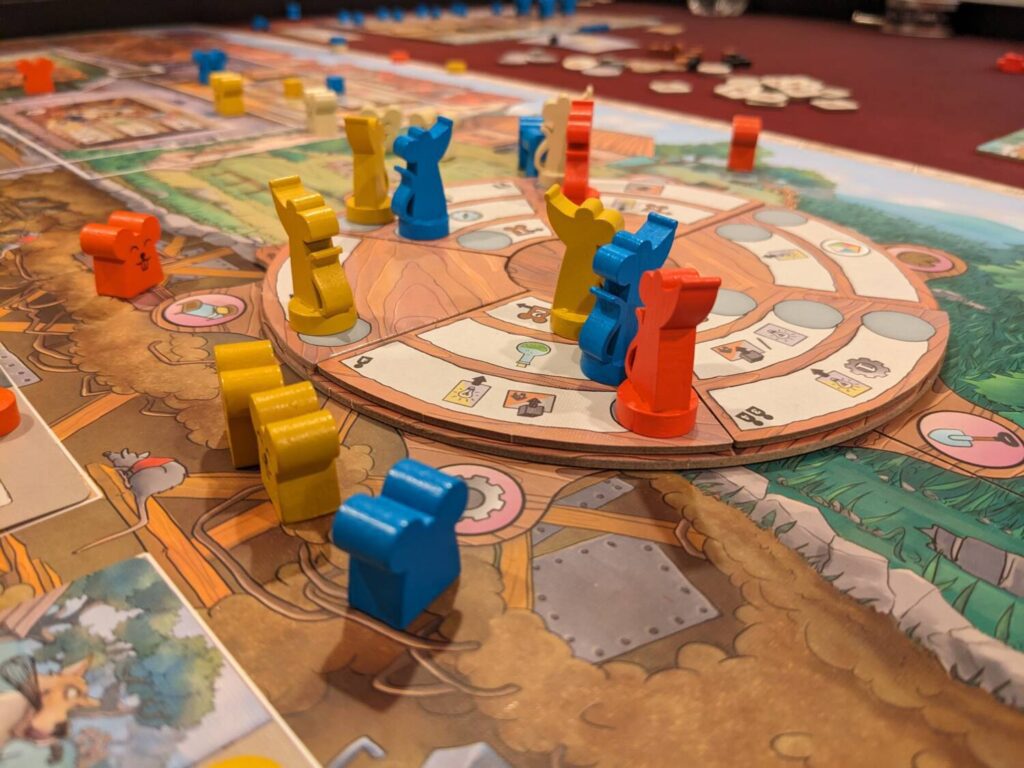
The Right Side of the Board
Rats of Wistar is a 1-4 player worker placement game that takes place over five rounds. A group of rats has escaped from the Wistar Institute, a lab where each rat gained impressive physical and mental skills while being run through experiments in captivity. Breaking out of Wistar gave the rats a chance at a life of freedom. Now, to prove their worth as the future leader of a new rat community, each faction, led by different Chiefs, must lead their workers back to the Institute to rescue other rodents, steal technology and resources, and complete missions.
Each player manages three Chief rats and a pool of Worker rats. The left-hand side of the board represents The Farm, a building at the Institute where the rats broke out. The right side of the board features an action selection area for the game’s six main actions (gathering wood, gathering metal, building beds, digging out rooms in the colony, getting new cards from the market, and exploration).
On a turn, the rules are simple: select one of the six actions if a space is available on the action wheel, then place a Chief rat to take that action. Each worker placement space lists one or two bonuses that are earned when selecting an action, and those bonuses can be activated before or after the main action. Once a player has selected an action, they cannot take that same action again that round.
The selected action provides a certain number of action points (known as Strength) based on the number of Worker rats in the region of that action. There are three regions: the forest (where the wood and digging actions are), the Farm (cards, exploration) and the Lair (metal, beds). In this way, Worker rats in the forest add action points to the wood and digging actions.
For example, let’s say that you select the Collect Wood action. You’ll get one wood for each Worker rat in the forest region. This also means that the active player will get no wood if there are no Worker rats of their faction at a location. If you have two Worker rats in the Farm area, you can spend two Movement tokens to send two Workers from the Farm to the forest to get that wood.
Exploration is the action that triggers most of what appears on the left side of the board. Using an Explorer rat (one of the Worker meeples, apparently house-trained, that never leaves that area), players will work their way through a large building to gather small bonuses, open up Missions, and possibly try and run to the basement of the Farm to get a cheese token that scores a few end-game points. While the Farm takes up half of the massive board, it doesn’t feel like half the game—in one case where I ended up winning, I didn’t explore the Farm at all.

In this way, I think exploration is nice, and certainly players could go hard in that area and win, perhaps often. One of the players in my review group really liked that portion of the game.
However, Exploration is not the reason I recommend buying Rats of Wistar. You want to play this game because of the action wheel.
That wheel is fantastic. The wheel has certain bonuses tied to each worker placement spot, and because the wheel rotates 60 degrees at the end of each round, the bonuses align with different main actions in each round.
For example, a space that grants a wood and a free Movement point to switch a Worker rat to another location might be underneath the Collect Wood action. If I’ve got two wood tokens to begin my turn, I can place a Chief here, get a free wood, then get another wood with the single Worker I already had in the forest region, giving me four total wood tokens.
Then I can use my bonus to move that forest region Worker to the Lair, where I can build beds on my next turn using that same four wood. Two Workers equals two strength, so now I can build two beds with my next action…and building beds unlocks more Workers, which I can then move to the Farm area to do something sassy on my third and final turn of the round.
And so on. The combos here are great. The clever chaining of actions, particularly in moving the right number of workers to the right place at the right time, all while hoping to not get blocked by an opponent—yes, Simone Luciani! This is why I play your games. Games of Rats of Wistar have gotten progressively more combotastic (yep, it’s a word) with each play.
And I haven’t even started talking about the cards yet.
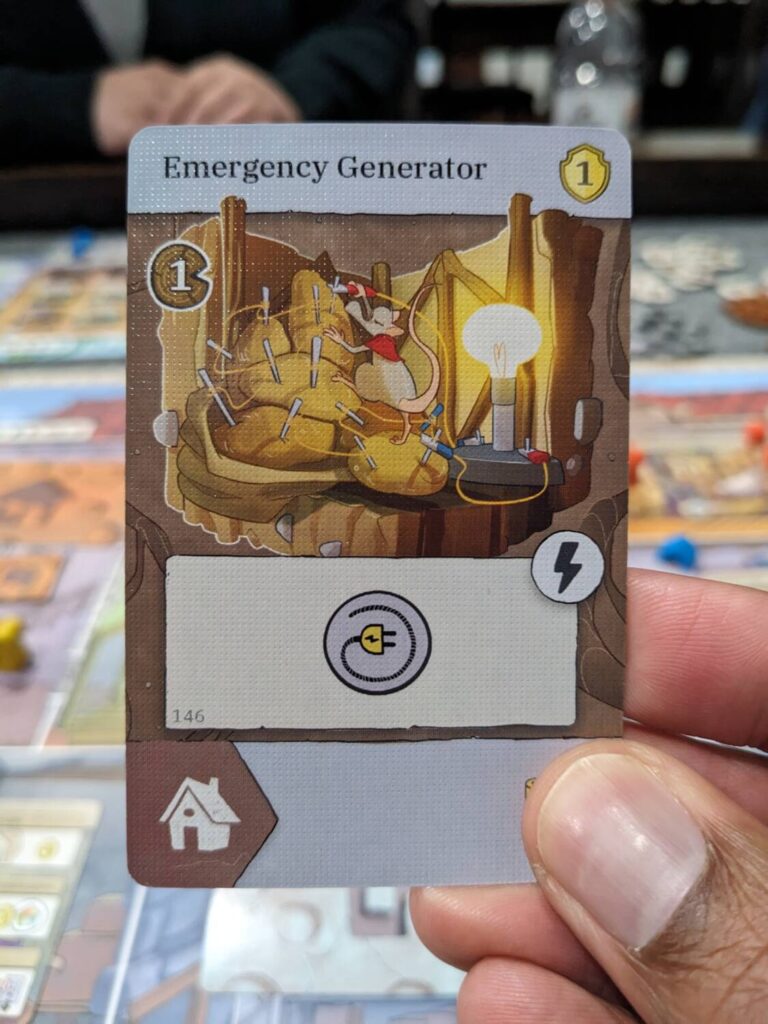
180 Unique Cards???
In many ways, the fact that there are 180 unique cards (known as Invention cards) that can be built and added to a player’s tableau is a negative and a positive. It’s great that every card is different, but that means players may have to scramble to the appendix to get a breakdown of what certain cards can actually do.
The iconography is intuitive. After my first play, I was usually able to suss out what a card was trying to do. And I think the cards are vital. Some of the Invention cards feature “types” or suits that play into the game’s milestone system; in other cases, players need to have a certain number of tags in their tableau in order to play other cards from hand.
The cards feel right at home from the person that gave us Grand Austria Hotel. You’ve got ongoing powers, cards that provide once-per-round actions, end-game scoring cards, and minor attack cards that hurt players hoarding too many resources. While one card features an axe, in many other cases you’ve got silly rat inventions like a Robot Snail, Electric Sawmill, and a Mechanical Chameleon. Of course the cards don’t make any sense, nor do they need to, as long as I understand that I’m getting to do a free one-point Exploration move each round and it’s worth four points at the end of the game.
The cards also grant players like me a chance to win while getting around accessing all of the things Rats of Wistar wants to do. Struggling to produce enough metal? Run around the Farm and open doors to get one-time resource bonuses. Can’t afford to build cards? Clear out rooms from your underground to accommodate guest mice tiles, which grant end-game points and possible income bonuses to start future rounds.
Rats of Wistar is great…but I do have one significant issue with the design.
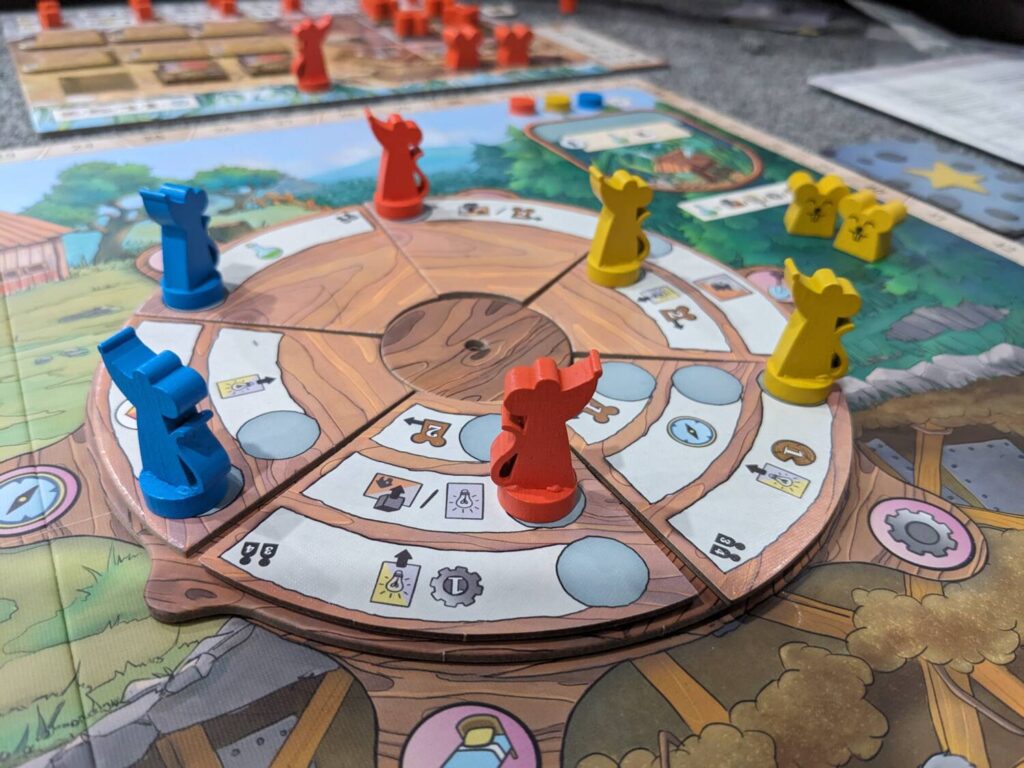
House Rule the Setup
Rats of Wistar has only one issue for me. Being the starting player is massive in any worker placement game, but especially so in this game.
And the start player for the first round is determined randomly. In a game where the start player doesn’t rotate automatically from round to round.
Sorry, but this won’t do. I know this because I have both benefited from and suffered through Rats of Wistar as the first player and as the last player in the opening round. In my four-player review play (I did three plays, at solo, three, and four-player counts), I was the fourth player. Going last here can be particularly brutal, because there is never a situation where an action has four worker placement spots. If everyone goes for wood on their first turn, the fourth player will automatically be shut out of that action.
Making matters somewhat worse: all players start with an equal number of resources regardless of where they are in player order.
To recap: a player is randomly selected as the first player. In reverse turn order, players draft a pair of starting Invention cards…somewhat important, but I think experienced players will want to go first during the game and not first to pick cards. The game only has 15 turns, and this ensures that a player going last will likely have to use a turn eventually to take the Alchemist’s Hut action to become the first player. (The Alchemist’s Hut does grant a bonus of a Movement token and a minor action.)
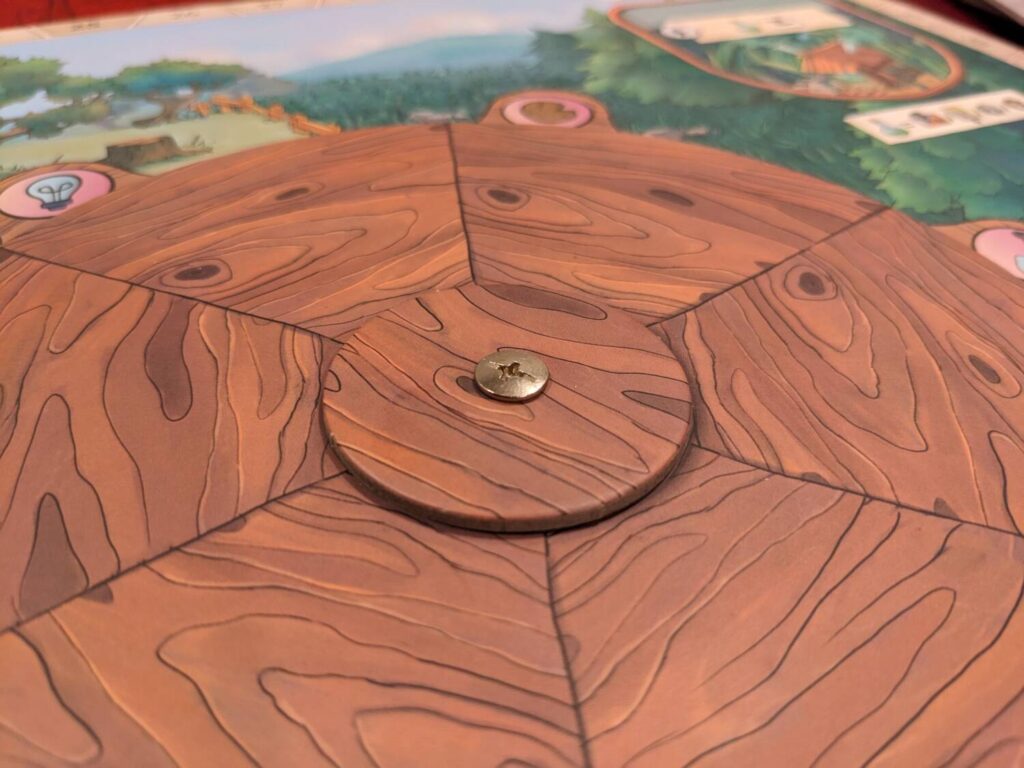
An interesting twist with a player taking the first player action—that leaves one less Chief token on the main action wheel, freeing up an action for another player in a game that is already tight on worker placement spots. It’s such an intriguing design choice, and I love this particular nuance of how games play out.
One suggestion for a fix to the first round, first player issue: the first player gets less stuff (let’s say one metal and one wood, instead of two of each like all other players get). Or maybe they only get one starting Invention card. But it doesn’t feel right when someone gets to randomly start in the pole position of such a short, tight experience.
Beyond that, I enjoyed Rats of Wistar. I love how fast it plays (30 minutes per player), it can be taught in about 15 minutes, and the variable setup is easier here because it scales up or down based on player count. Fewer players? Fewer doors and Mission cards to place on the board. Save for shuffling a couple of massive card decks, setup time was relatively easy.
I’d like a player aid with detail on the six main actions, not just a small tile listing the seven free actions one can take on their turn. That player aid could also detail the long list of icons that currently reside in the two-page appendix at the back of the manual. My copy of the rules had a list of errata that will hopefully be incorporated into the manual when the game arrives in the US via Capstone Games. (My copy came from our partners at Cranio Creations during SPIEL 2023.)
One other minor but somewhat criminal act with the board—the action wheel has to be pinned to the board to stay put. A pin is included…in the form of a screw that has to be inserted and removed every time you play. I have never seen this in a board game, and I hope to never see it again!!
Rats of Wistar is a lot of fun. In the battle of rat games, I might still prefer First Rat just a tad because I can play First Rat with my family and Rats of Wistar is a more thinky experience. But the action wheel in Rats of Wistar is one of my favorite mechanics of the year. I really like the cards, and the game is my kind of tight. I would be shocked if expansion content isn’t already in the works, so I’m looking forward to keeping this one in the collection.


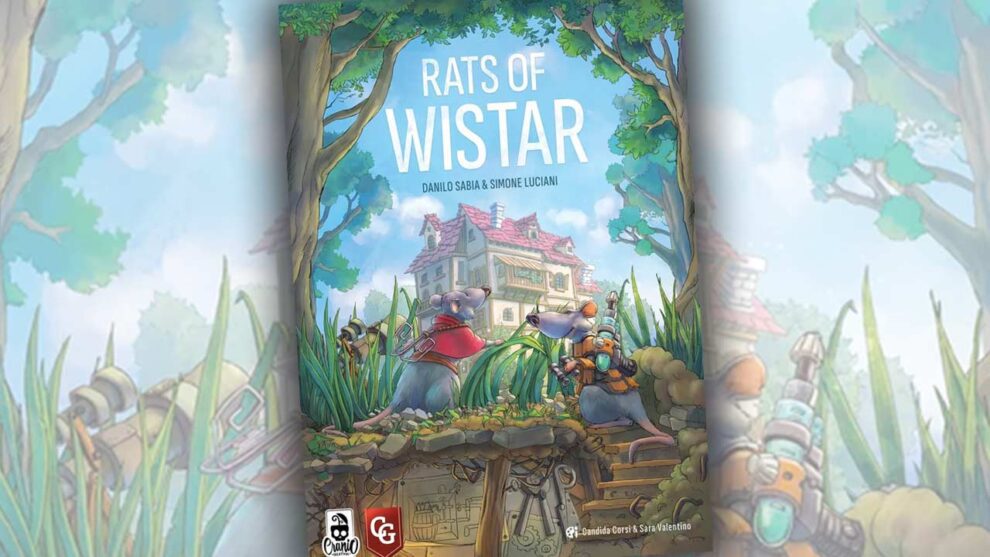

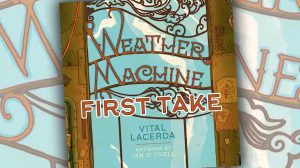







This sounds like a lot of fun! All of your criticisms seem rational and appropriate (honestly? a screw?).
I will be on the lookout for this one. And I will have to go give First Rat a closer look. Thanks for an excellent review.